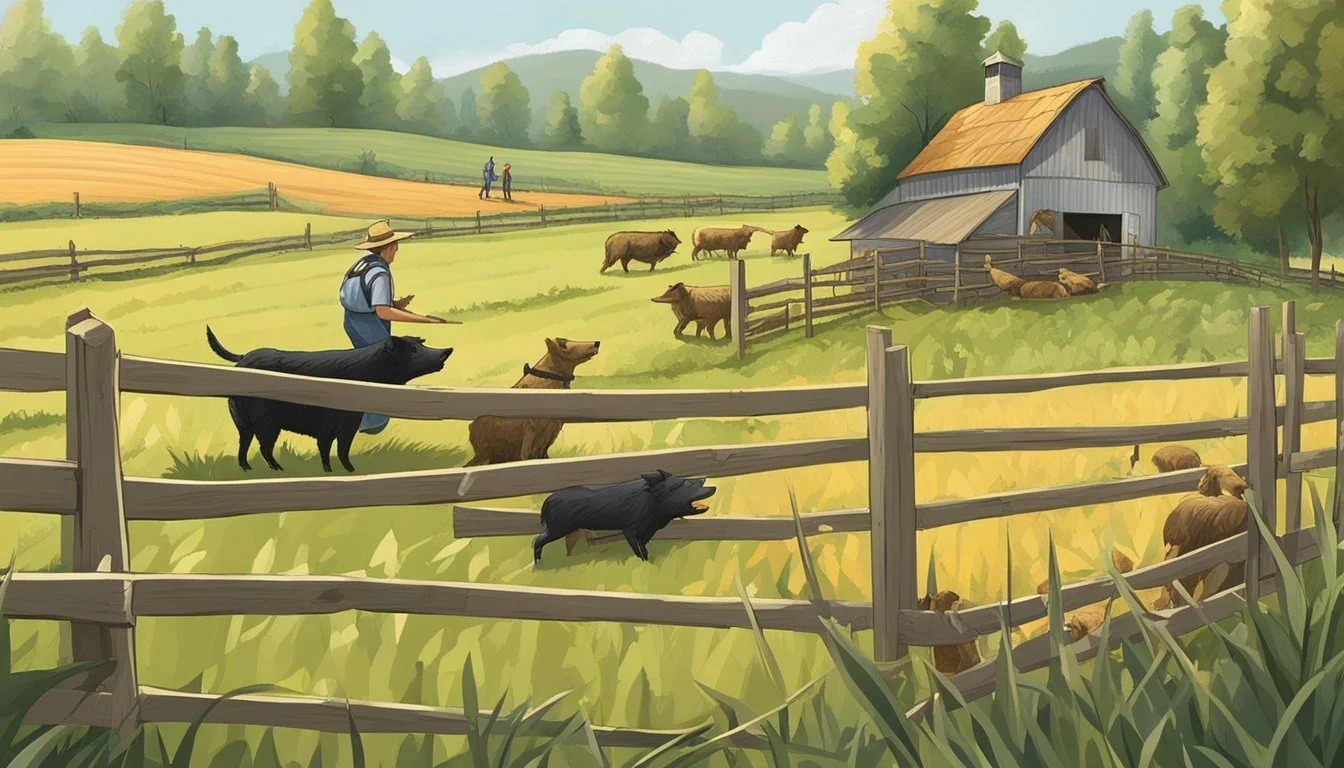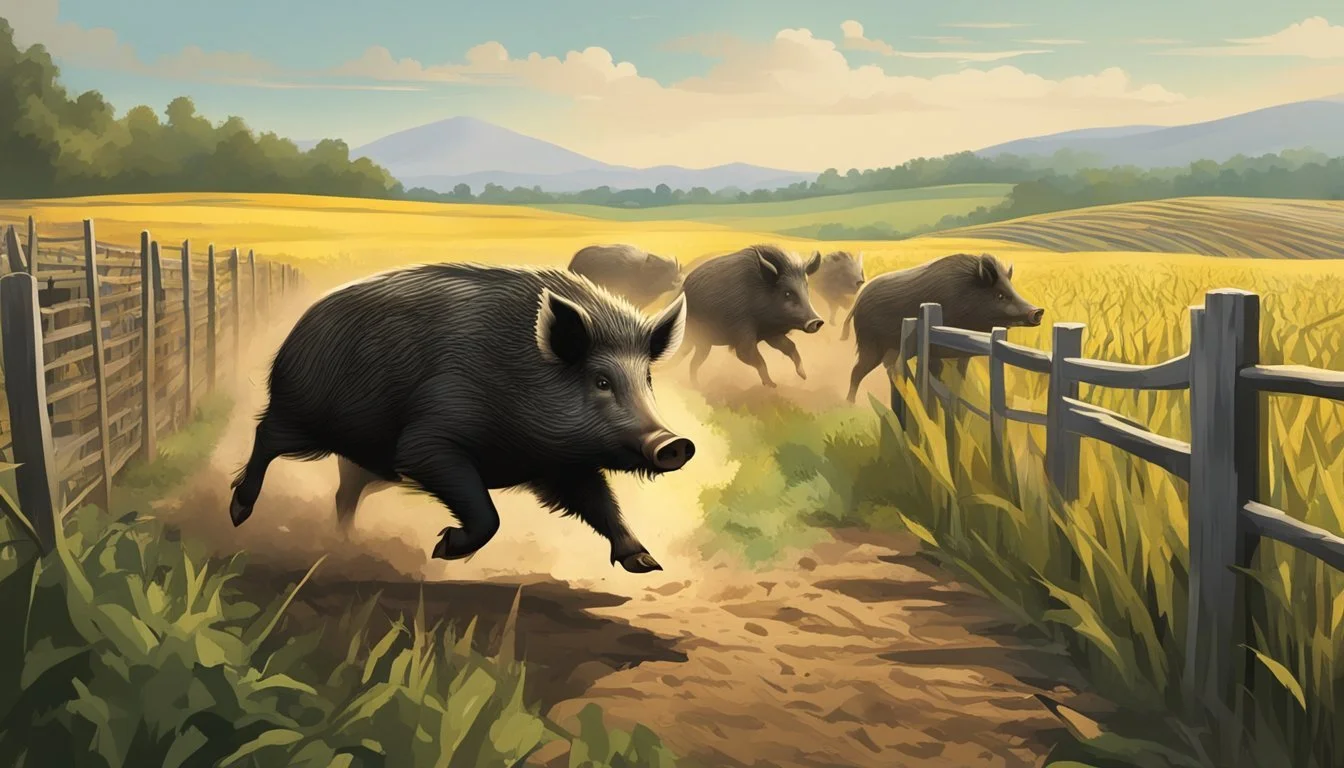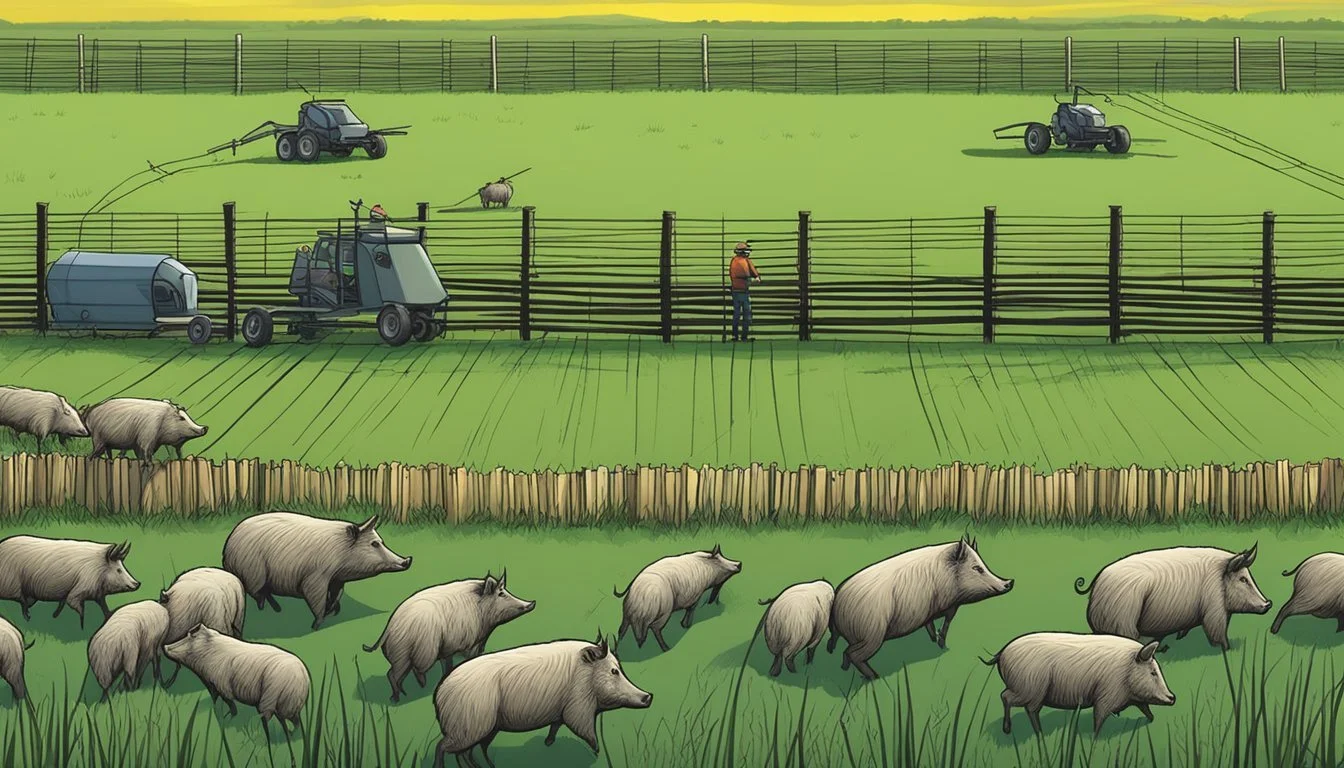Protecting Crops from Wild Boar
Effective Control Strategies
Wild boars pose a significant threat to agricultural lands, wreaking havoc on crops which can lead to substantial economic losses for farmers. These animals are highly adaptable, opportunistic feeders known for their destructive foraging habits. Their rooting behavior, where they dig into the soil searching for food, can damage the root systems of plants, compromise the structural integrity of the farmland, and result in reduced crop yields.
Implementing effective measures to protect crops from wild boars is essential for maintaining the productivity and sustainability of agricultural operations. Strategies include physical barriers, such as fences, which are often regarded as one of the most reliable methods. Installing sturdy agricultural fences can create a formidable obstruction to boars, while more technologically advanced solutions like electronic repellents can offer additional layers of protection.
Understanding Wild Boar Behavior
To mitigate the damage caused by wild boars to agriculture, gaining insight into their behavioral patterns is crucial. This includes understanding their habitat preferences and seasonal movements as well as their diet and feeding habits.
Habitat and Seasonal Patterns
Wild boar populations are known for their adaptability, occupying a variety of habitats ranging from forests to agricultural landscapes. They exhibit clear seasonal variation in their movements. In spring and fall, wild boars frequently move in search of food, which often leads them to venture closer to agricultural crops. Temperature changes also play a role; milder conditions in these seasons facilitate their search for food.
Diet and Feeding Habits
The diet of wild boars is predominantly plant-based, constituting up to 80-90% of their food intake. They are opportunistic feeders, consuming a wide range of agricultural crops, and this flexibility in diet makes them a significant nuisance to farmers. Their feeding behavior intensifies during periods when natural forest food resources are low, leading them to forage in cultivated areas more frequently.
Assessing Crop Damage
When wildlife, specifically wild boar, encroach on farmland, they can lead to significant alterations in the landscape and can have a powerful impact on agricultural sustainability and economics.
Impact on Agricultural Lands
Wild boar activity on agricultural land often involves uprooting soil and destroying crops as they search for food. Assessing the extent of the damage requires precise methods, often employing advanced technology, such as drones, for accurate estimations. The disruption of soil structure and the reduction in crop yield not only reflect immediate losses but also long-term degradation of land quality, which can influence future agricultural productivity.
Economic Consequences
The economic consequences of wild boar damage to crops are substantial. Farming households living in proximity to boar habitats can experience severe financial strain due, in part, to the costs associated with fencing and other protection methods. The reduction in crop yield translates directly into a loss of income. Moreover, the unpredictability of wild boar incursions makes it difficult to forecast agricultural productivity, creating instability in both supply and price for the affected commodities in the market. It is essential for stakeholders to develop and standardize cost-effective methods for monitoring and assessing crop damage to mitigate these economic challenges.
Crop Protection Strategies
Protecting crops from wild boar requires a multifaceted approach. Not only must the solutions be effective, but also practical for long-term implementation. Below are specific tactics that can safeguard agricultural resources.
Effective Fencing Solutions
The construction of barriers is a fundamental method of crop protection. Electric fences are particularly beneficial due to their deterrent effect. They deliver a short, sharp shock that discourages wild boar from attempting to breach the perimeter. The efficacy of these barriers typically depends on regular maintenance to ensure continued functionality. Additionally, sturdy non-electric fences can also play a significant role in preventing access to crops.
Use of Repellents and Deterrents
Farmers often employ repellents and deterrents to discourage wild boar from entering crop areas. For example, the utilization of odor repellents has been identified as a possible measure to keep these animals at bay. Other innovative deterrents such as solar blinkers can also contribute to reducing crop damage by creating unfavorable conditions for wild boar, effectively altering their feeding patterns and habitat use without harming the animals.
Hunting and Population Management
Wildlife management strategies often incorporate hunting and controlling the population status of wild boar to mitigate their impact on agriculture. Controlled hunting can help limit the boar population to a manageable number, thereby reducing the likelihood of crop damage. This method works best when combined with a solid understanding of the species' behavior and habitat, ensuring that any impact on local ecosystems is minimal and sustainable in the long run.
Legal and Ethical Considerations
When managing wild boar populations to protect crops, it is crucial for farmers and wildlife authorities to navigate a complex framework of legal and ethical considerations. These ensure sustainable wildlife management and adherence to hunting regulations, with the goal of mitigating conflicts between humans and boars while respecting animal welfare.
Wildlife Management Regulations
Wildlife management is governed by laws that vary by jurisdiction but are critical in maintaining ecological balance and protecting property. Institutions responsible for wildlife management establish regulations for controlling wild boar populations. These regulations might involve issuing permits for fencing or repellents, and sometimes prescribing culling when necessary. References to specific laws provide the framework for these actions, ensuring that they are carried out in a legal and ethical manner.
Hunting Laws and Restrictions
Hunting wild boars is subject to strict restrictions to ensure safety and conservation. Laws dictate when boars may be hunted, the permissible methods, and the requirement to pay a VAT on hunting activities. Hunting licenses are often required. These laws aim to control boar populations while minimizing conflicts with local farming communities. Restrictions on the use of certain traps or weapons serve as ethical limitations, reducing the possibility of unnecessary suffering among animal populations.
Preventive Measures and Alternatives
To safeguard crops from the damage caused by wild boar, farmers and land managers can implement various preventive measures. These strategies range from altering agricultural practices to reinforce the agroecosystem to utilizing natural predators to maintain balance within the ecosystem.
Agricultural Practices
One effective method for protecting crops is the introduction of physical barriers such as electric fencing, which can provide a robust line of defense against intruding wild boars. Additionally, manipulating the timing of planting can be instrumental, since it may discourage wild boars by reducing the attractiveness of crops at their peak foraging times.
Repellents: Evaluating and applying certain repellents can deter wild boars from entering crop fields.
Crop Choice: Cultivating less preferred crops by wild boars may inherently lead to lower levels of damage.
Sanitation: Reducing food waste and leftover crops can limit wild boar attraction to agricultural lands.
The integration of these practices helps in creating an agroecosystem that is less appealing to wild boars, ultimately minimizing crop damage.
Natural Predators and Ecosystem Balance
Incorporating biodiversity in agriculture not only strengthens ecosystem health but also harnesses natural predator-prey relationships. For example:
Birds of Prey: Encouraging the presence of raptors, which thrive in diverse habitats, can provide a level of control over smaller animals that could attract wild boars.
Carnivores: The presence of larger carnivores like wolves can be a form of direct population control for wild boars, though this must be managed carefully to avoid other conflicts.
Canines: Employing guard dogs has been an age-old practice that still holds relevance today for its effectiveness in keeping wild boars at bay.
Primates: In some ecosystems, monkeys could potentially influence wild boar behavior, though their role in direct crop protection may be limited and context-specific.
Through these methods, a balance is struck by reintroducing natural checks and deterrents within the agricultural lands, providing an enduring solution to crop damage by wild boar.
Innovative and Emerging Solutions
As wild boar populations expand, resulting in increased crop damage, innovators and researchers are developing new solutions to mitigate these challenges. These solutions blend technology with community effort, aiming not only to deter wild boar but also to maintain ecological balance.
Technological Advancements
Internet of Things (IoT) Systems: Recent developments in IoT offer smart solutions for protecting crops from wild boar invasions. These systems utilize a network of sensors to detect the presence of wild boars and implement countermeasures such as activating lights or sounds to scare the animals away.
Field Experiments: Testing these IoT systems involves rigorous field experiments to ensure effectiveness and refine strategies.
Automated Drones: Another promising technology involves drones, equipped with cameras, to monitor and intervene in potential wild boar attacks, providing a non-invasive method to protect crops.
Community-Based Approaches
Integrated Pest Management (IPM) Strategies: Farmers are actively participating in community-based programs to implement IPM strategies. These include a combination of traditional methods, such as fencing, with modern practices like using predictive analytics to understand and prevent wild boar attacks on crops.
Collaborative Efforts: By working together, communities can pool resources, share knowledge, and develop localized solutions tailored to their specific agricultural environments.
Global Perspectives on Wild Boar Management
The international community faces significant challenges in managing Sus scrofa populations as they impact agricultural sectors across various regions. This section will focus on specific case studies from Europe and the USA, and explore how international cooperation is facilitating knowledge exchange for effective wild boar management.
Case Studies from Europe and USA
In Europe, wild boar populations have expanded, causing notable damage to crops and requiring intervention. An odor repellent has been evaluated in Switzerland as a non-physical barrier alternative to electric fences, commonly used to protect fields. This study was conducted particularly in Thurgau, a region in Northeastern Switzerland, which is representative of the broader European challenges.
In Portugal, the rise in conflict due to crop raids by wild boars has encouraged the exploration of various management strategies. Managing these animals not only requires an understanding of their behavior but also the socioeconomic impact they have on local agriculture.
The USA confronts similar issues, but strategies differ based on local environments and wild boar behavior. Research from the United States focuses on population control and the effectiveness of different deterrents in a diverse array of landscapes.
International Cooperation and Knowledge Exchange
International cooperation plays a critical role in managing wild boar populations, as evidenced by shared strategies across countries. Spain and Central Italy are two examples where habitat manipulation and controlled hunting are used to mitigate damage, indicating a common understanding of effective practices.
The exchange of risk models and multi-scale habitat analyses contributes significantly to the global pool of knowledge. Such collaborations enhance the ability of countries to predict and manage wild boar damage within agricultural sectors.
In summary, recognizing the shared challenges posed by Sus scrofa, nations are increasingly pooling resources and expertise. This collective approach has led to a more sophisticated and informed set of strategies that contribute to the mitigation of the economic impact wild boars have on agriculture.
Frequently Asked Questions
When it comes to protecting crops from wild boars, there are several solutions that can be implemented to effectively mitigate this challenge.
What are effective methods to deter wild boars from farmlands?
Farmers may use physical barriers such as sturdy fences, which can be an essential first step in deterring wild boars. Installing fences like electric fencing is both economical and effective to prevent access to crops.
Can ultrasonic repellents be used to prevent wild boar incursions?
Ultrasonic repellents are another tool in the arsenal against wild boars, emitting sounds at frequencies that are intended to be unpleasant to the animals, thus discouraging them from entering an area.
What techniques do farmers use to protect their crop fields from wild boars?
In addition to fencing, strategic use of lights and noise can disrupt and deter wild boars. Some farmers rotate their crops and employ guard animals to safeguard their fields, implementing a multi-faceted approach to crop protection.
How can an intelligent surveillance system safeguard crops against wild animals?
Intelligent surveillance systems that include motion sensors and night vision can alert farmers to the presence of wild animals, enabling timely intervention to prevent crop damage.
What strategies help to keep hogs away from agricultural areas?
Consistent patrolling and maintaining a clear perimeter around crop fields can discourage hogs from encroaching. Harmless tactics such as spraying scents that hogs find repulsive or emitting random bursts of sound or light can be quite effective.
Are there repellents safe and effective for use against wild boars in crop protection?
There are a variety of safe repellents available on the market specifically designed to be used against wild boars. These repellents can take the form of taste aversions or scented products that create an unpleasant environment for the animals.





